2018-03-22 - Nº 151
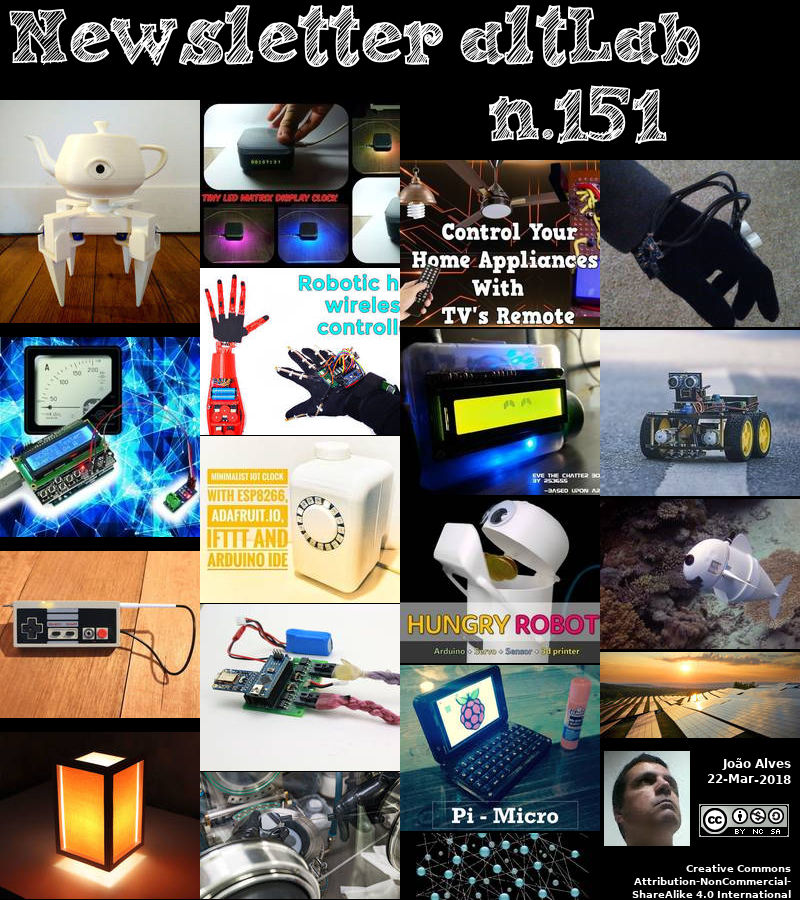
Editorial
Esta é a Newsletter Nº 151 que se apresenta com o mesmo formato que as anteriores. Se gostar da Newsletter partilhe-a!
Todas as Newsletters encontram-se indexadas no link.
Esta Newsletter tem os seguintes tópicos:
Faz anos hoje que nascia, em 1768, Bryan Donkin. Este engenheiro mecânico e inventor inglês foi responsável pela melhoria do desenho e instalação de uma máquina protótipo para fazer papel em comprimentos contínuos numa fábrica. Em 1808, Donkin adquiriu as obras e uma licença para fabricar as máquinas de fabricação de papel. Ele também desenvolveu máquinas de impressão e inventou o rolo de composição usado na impressão. Donkin detinha outras patentes sobre engrenagens, canetas de aço, fabricação de papel e rodas ferroviárias. Ele também trabalhou na preservação de alimentos em contentores herméticos, contadores de voltas e melhorou as roscas aparafusadas precisas para graduação de escalas matemáticas.
Faz também anos hoje que nascia, em 1788, Pierre Joseph Pelletier. Este químico francês é conhecido pela sua pesquisa em parceria com Joseph-Bienaimé Caventou em bases vegetais e as contribuições resultantes da química alcaloide para o campo da medicina. Eles contribuíram para a química dos alcaloides vegetais. Eles isolaram a clorofila, para a qual cunharam o nome francês clorofila em Ann. de Chimie (1818), IX, 195. As suas descobertas de alcaloides incluíram estricnina (1818), brucina (1819), quinina (1820), cafeína (1821) e cinchonina. Em 1823, usando análises elementares de tubo fechado, em que os alcaloides foram queimados, descobriram que o nitrogénio estava presente nos compostos. Os alcaloides são compostos orgânicos que formam sais hidro-solúveis que desempenham várias funções na medicina, incluindo analgésicos e estimulantes respiratórios.
Faz igualmente anos hoje que nascia, em 1799, Friedrich Wilhelm Argelander. Este astrónomo alemão estabeleceu o estudo de estrelas variáveis como um ramo independente da astronomia e é conhecido pelo seu grande catálogo listando as posições e o brilho de 324.188 estrelas do hemisfério norte acima da nona magnitude. Ele estudou na Universidade de Königsberg, na Prússia, onde foi aluno e depois o sucessor de Friedrich Wilhelm Bessel. Em 1837, Argelander publicou a primeira grande investigação do movimento do Sol através do espaço. Em 1844 ele começou estudos de estrelas variáveis.
Faz também anos hoje que nascia, em 1868, Robert Andrews Millikan. Este físico norte-americano recebeu o Prémio Nobel da Física em 1923 pelo seu trabalho sobre a carga elementar de electricidade e sobre o efeito fotoeléctrico. A famosa experiência de gota de óleo de Millikan (1911) foi muito superior às determinações anteriores da carga de um electrão, e ainda mostrou que o electrão era uma partícula discreta e fundamental. Quando o seu valor foi substituído na fórmula teórica de Niels Bohr para o espectro de hidrogénio, essa teoria foi validada pelos resultados experimentais. Assim, o trabalho de Millikan também forneceu convincentemente a primeira prova da teoria quântica do átomo de Bohr. Em trabalhos posteriores, Millikan definiu o termo "raios cósmicos" em 1925 durante seu estudo da radiação do espaço exterior.
Por fim, faz anos hoje que nascia, en 1931, Burton Richter. Este físico americano liderou a equipa do Stanford Linear Accelerator Center (SLAC), que descobriu o mesão J/psi em 1974, ao lado da equipe do Brookhaven National Laboratory (BNL), liderada por Samuel Ting. Esta descoberta foi parte da chamada Revolução de Novembro da física de partículas. Ele foi o director do SLAC de 1984 a 1999. Recebeu o prémio Nobel da física conjuntamente com Samuel Ting em 1976.
Esta semana ficámos a saber que foi lançada uma versão open-source do webOS. O webOS é uma plataforma de software centrada na web e voltada para a usabilidade para dispositivos inteligentes. O sistema operativo evoluiu constantemente, passando por empresas como a Palm, a HP e, mais recentemente, pela LG Electronics. A versão agora lançada chama-se webOS Open Source Edition (OSE). Esta versão corre para já num Raspberry Pi 3.
Esta semana também ficámos a saber que o foguetão lançado pela SpaceX em 2017 criou um enorme buraco na atmosfera superior da Terra que poderia ter interrompido temporariamente o funcionamento dos sistemas de GPS. O foguetão Falcon 9, descolou em Agosto para colocar um satélite em órbita. Uma equipa liderada por Charles Lin, da Universidade Nacional de Cheng Kung, em Tainan, Taiwan, analisou como o lançamento afectou a ionosfera, uma camada atmosférica composta de electrões e iões livres. O escape do foguetão gerou um buraco de 900 quilómetros de largura no plasma ionosférico.
Na Newsletter desta semana apresentamos diversos projetos de maker. São apresentados também o livro Raspberry PI Annual 2018 e a revista HackSpace #5.
 João Alves ([email protected])
João Alves ([email protected])
O conteúdo da Newsletter encontra-se sob a licença  Creative Commons Attribution-NonCommercial-ShareAlike 4.0 International License.
Creative Commons Attribution-NonCommercial-ShareAlike 4.0 International License.
Novidades da Semana

webOS Open Source Edition Overview
"webOS Open Source Edition Overview webOS is a web-centric and usability-focused software platform for smart devices. The operating system has constantly evolved, passing through its journey from Palm to HP, and most recently to LG Electronics. Now, we are releasing webOS as an open source project, named webOS Open Source Edition (OSE). Powerful and Easy-to-use Open Software Platform webOS OSE is a powerful and versatile software platform, reflecting the innovative features applied to various electronic products ranging from display products to mobile devices and home appliances. Web developers can easily build apps and services for webOS OSE. With the initial release, you can port webOS OSE to Raspberry Pi 3 for use in your own projects." [...]

A SpaceX rocket blows a hole in the atmosphere
"Launch-related rupture has the potential to disrupt navigation signals. ws a hole in the atmosphere Launch-related rupture has the potential to disrupt navigation signals. A rocket launched in 2017 punched an enormous hole in Earth’s upper atmosphere that might have temporarily disrupted Global Positioning System (GPS) navigation. The Falcon 9 rocket, built by private space-flight company SpaceX, blasted off in August to take a satellite to orbit. A team led by Charles Lin of National Cheng Kung University in Tainan, Taiwan, analysed how the launch affected the ionosphere, an atmospheric layer composed of free electrons and ions. The Falcon 9’s passage generated the first known circular acoustic shock waves made by a rocket." [...]
Outras Notícias
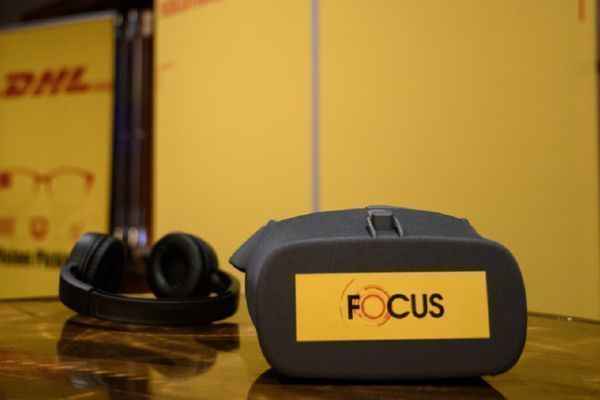
DHL to Deploy Robots, Drones, Virtual Reality to Speed up Deliveries
"DHL is employing a variety of new technologies to deliver packages faster and give consumers more options when it comes to where and when they want their packages arrive. As part of an innovation showcase media event here on March 15, company executives detailed its new DHL Parcel Metro service and showed off various technologies it’s using today or at least piloting, including virtual reality, robotics and autonomous vehicles. The new DHL Parcel Metro service has been in a pilot phase and is now officially available in three cities, Chicago, Los Angeles and New York. DHL said it will employ a kind of crowd-sourcing strategy that works with local delivery services to offer retailers a branded service. The metro services is scheduled to start in Atlanta, Dallas, San Francisco and Washington D.C. later this year. “The DHL brand is not visible." [...]

Self-driving Uber car kills Arizona woman crossing street
"An Uber self-driving car hit and killed a woman crossing the street in Arizona, police said on Monday, marking the first fatality involving an autonomous vehicle and a potential blow to the technology expected to transform transportation. The ride services company said it was suspending North American tests of its self-driving vehicles, which are currently going on in Arizona, Pittsburgh and Toronto. So-called robot cars, when fully developed by companies including Uber, Alphabet Inc and General Motors Co, are expected to drastically cut down on motor vehicle fatalities and create billion-dollar businesses. But Monday’s accident underscored the possible challenges ahead for the promising technology as the cars confront real-world situations involving real people. U.S. lawmakers have been debating legislation that would speed introduction of self-driving cars. “This tragic accident underscores why we need to be exceptionally cautious when testing and deploying autonomous vehicle technologies on public roads,” said Democratic Senator Edward Markey, a member of the transportation committee, in a statement." [...]
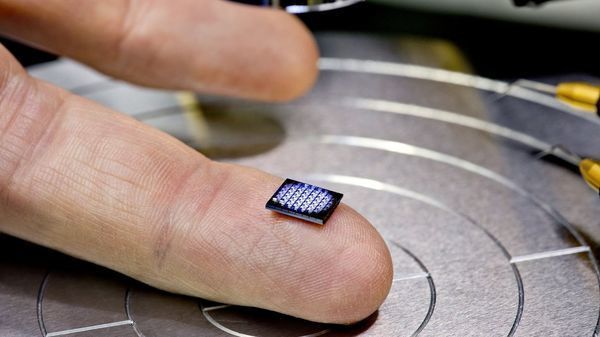
IBM has made the world's smallest computer, and it's just absurd
"If there's one downside to powerful computers, it's that they're too damn big. Luckily, that's about to change. At least, if IBM has anything to say about it. March 19 is the first day of IBM Think 2018, the company's flagship conference, where the company will unveil what it claims is the world's smallest computer. They're not kidding: It's literally smaller than a grain of salt. But don't let the size fool you: This sucker has the computing power of the x86 chip from 1990." [...]

Mbed OS 5.7.7 released
"We are pleased to announce the Mbed OS 5.7.7 release is now available. This is the latest patch release based on the feature set that Mbed OS 5.7 introduces. Summary We have added support for the following new targets in this release, Laird BL652, STEVAL-3DP001V1, UBLOX_C030_R410M and OSHChip. The SDK driver for the LPC546XX family has been updated to version 2.3. We have added TRNG support for NRF52832. To improve the raising of pull requests we have simplified the required header." [...]
Ciência e Tecnologia

Your next computer could improve with age
"Artificial intelligence is sweeping industries like medicine and finance. What if the machine you’re reading this on could learn too? Generally, computers slow down as they age. Their processors struggle to handle newer software. Apple even deliberately slows its iPhones as their batteries degrade. But Google researchers have published details of a project that could let a laptop or smartphone learn to do things better and faster over time." [...]

Making solar panels last longer
"Researchers use machine learning to better gauge failure of solar panels; could lead to longer-lasting panels, lower costs Researchers at Case Western Reserve University have taken a crucial step toward increasing the lifespan of photovoltaic solar panels and potentially lowering solar-energy costs for manufacturers and consumers. A team of scientists at Case Western Reserve’s Solar Durability and Lifetime Extension (SDLE) Research Center recently unveiled a new method to quickly and accurately read tens of thousands of images of solar panels as they break down and ultimately fail over time. This latest research, believed to be the first of its kind, relies on electroluminescence photography coupled with “machine learning” to build on previous gains in measuring the effect of weather and time on solar panels at the research center. “Our partners and collaborators in the industry are very excited because this method will work for any brand and help them improve their solar panels,” said Roger French, the Kyocera Professor of Materials Science and head of the SDLE Research Center. Until now, solar-panel manufacturers had relied primarily on single, static photographs of the photovoltaic cells taken after they failed. They could only draw limited conclusions about why the panel degraded and lost power." [...]
Monocrystalline silicon thin film for cost-cutting solar cells with 10-times faster growth rate fabricated
"A research team from Waseda University and Tokyo Institute of Technology (Tokyo Tech) have successfully produced high-quality thin film monocrystalline silicon with a reduced crystal defect density down to the silicon wafer level at a growth rate that is more than 10 times higher than before. In principle, this method can improve the raw material yield to nearly 100%. Therefore, it can be expected that this technology will make it possible to drastically reduce manufacturing costs while maintaining the power generation efficiency of monocrystalline silicon solar cells, which are used in most high efficient solar cells. Background Solar power generation is a method of generating power where solar light energy is converted directly into electricity using a device called a “solar cell.” Efficiently converting the solar energy that is constantly striking the earth to generate electricity is an effective solution to the problem of global warming related to CO2 emissions. By making the monocrystalline Si solar cells that are at the core of solar power generation systems thinner, it is possible to greatly reduce raw material costs, which account for about 40% of the current module, and by making them flexible and lighter, usage can be expected to expand and installation costs can be expected to decrease. In addition, as a method of reducing manufacturing cost, thin-film monocrystalline Si solar cells that use porous silicon (Double Porous Silicon Layer: DPSL) via lift-off are attracting attention as having a competitive edge in the future." [...]
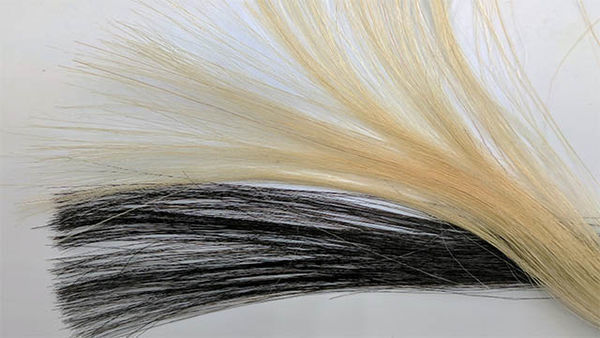
Graphene finds new application as non-toxic, anti-static hair dye
"New formula works as well as commercial permanent dyes without chemically altering hairs It’s an issue that has plagued the beauty industry for more than a century: Dying hair too often can irreparably damage your silky strands. Now a Northwestern University team has used materials science to solve this age-old problem. The team has leveraged super material graphene to develop a new hair dye that is non-toxic, non-damaging and lasts through many washes without fading. Graphene’s conductive nature also opens up new opportunities for hair, such as turning it into in situ electrodes or integrating it with wearable electronic devices. The study was published online today (March 15) by the journal Chem. Jiaxing Huang, professor of materials science and engineering in Northwestern’s McCormick School of Engineering, led the research." [...]
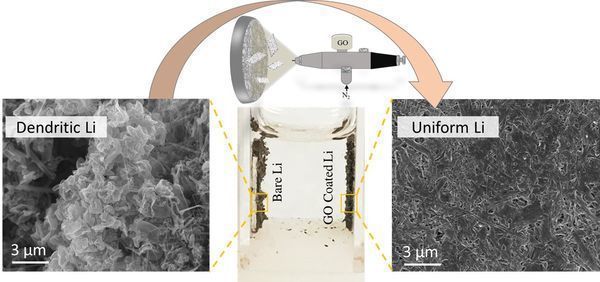
Graphene oxide nanosheets could help bring lithium-metal batteries to market
"Lithium-metal batteries — which can hold up to 10 times more charge than the lithium-ion batteries that currently power our phones, laptops and cars — haven’t been commercialized because of a fatal flaw: as these batteries charge and discharge, lithium is deposited unevenly on the electrodes. This buildup cuts the lives of these batteries too short to make them viable, and more importantly, can cause the batteries to short-circuit and catch fire. Now, researchers at the University of Illinois at Chicago have developed a solution to this problem in the form of a graphene-oxide coated ‘nanosheet’ that, when placed in between the two electrodes of a lithium-metal battery, prevents uneven plating of lithium and allows the battery to safely function for hundreds of charge/discharge cycles. They report their findings in the journal Advanced Functional Materials. “Our findings demonstrate that two-dimensional materials — in this case, graphene oxide — can help regulate lithium deposition in such a way that extends the life of lithium-metal batteries,” said Reza Shahbazian-Yassar, associate professor of mechanical and industrial engineering in the UIC College of Engineering and corresponding author of the paper. Lithium-metal batteries are so useful because of their high-energy density and relatively light weights compared with conventional batteries." [...]

Scientists design conceptual asteroid deflector and evaluate it against massive potential threat
"Lawrence Livermore National Laboratory (LLNL) scientists are part of a national planetary defense team that designed a conceptual spacecraft to deflect Earth-bound asteroids and evaluated whether it would be able to nudge a massive asteroid – which has a remote chance to hitting Earth in 2135 – off course. The design and case study are outlined in a paper published recently in Acta Astronautica (link is external). The 9-meter-tall, 8.8-ton spacecraft – dubbed HAMMER (Hypervelocity Asteroid Mitigation Mission for Emergency Response vehicle) – features a modular design that would enable it to serve as either a kinetic impactor, essentially a battering ram, or as a transport vehicle for a nuclear device. Its possible mission: deflect 101955 Bennu, a massive asteroid around 500 meters (more than five football fields) in diameter, weighing around 79 billion kilograms (1,664 times as heavy as the Titanic), circling the sun at around 63,000 miles per hour. Based on observation data available, Bennu has a 1 in 2,700-chance of striking Earth on Sept. 25, 2135, and it is estimated that the kinetic energy of this impact would be equivalent to 1,200 megatons (80,000 times the energy of the Hiroshima bomb). “The chance of an impact appears slim now, but the consequences would be dire,” said Kirsten Howley, LLNL physicist and coauthor on the paper." [...]
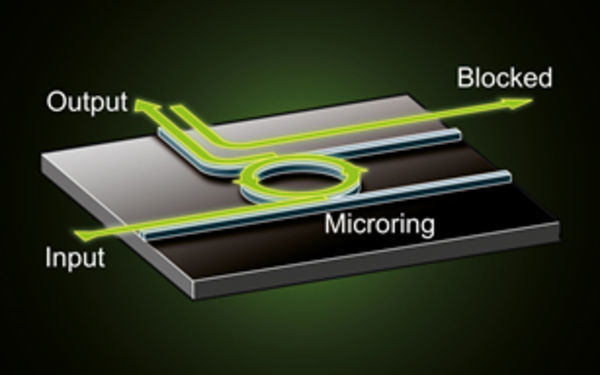
NPL scientists create diodes made of light
"Photonics researchers at the National Physical Laboratory (NPL) have achieved the extra-ordinary by creating a diode consisting of light that can be used, for the first time, in miniaturised photonic circuits, as published in Optica. Dr Pascal Del'Haye and his team at NPL have created an optical version of a diode that transmits light in one direction only, and can be integrated in microphotonic circuits. This small-scale integration has been a major challenge in photonics because existing optical diodes require bulky magnets. NPL's ground-breaking work has overcome the limitation of diodes based on bulky magnets, by using light stored in tiny chip-based glass rings to form a diode. Diodes are well known in electronic circuits. They transmit electric current in one direction but block the current in the backward direction." [...]
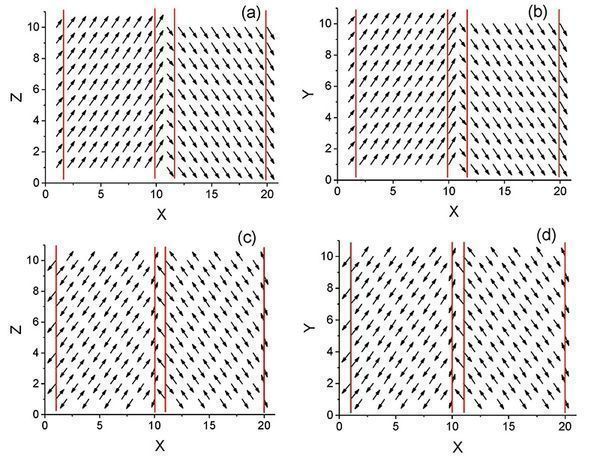
Research on Bismuth Ferrite Could Lead to New Types of Electrical Devices
"Electrical devices in use today use conductive materials to guide electrons where they are needed. These materials must be fastened in place and insulated in order to keep the electricity on the right path. New research from the University of Arkansas makes a significant step toward a new kind of electrical device, which would use the natural properties of materials like bismuth ferrite, along with a different type of current, to send electricity quickly through smaller, denser circuits. Sergey Prosandeev, a research professor in the Department of Physics, worked with Yurong Yang, research associate professor; Charles Paillard, post doctoral fellow; and Laurent Bellaiche, Distinguished Professor. Their results are published in the journal npj Computational Materials. Using the Arkansas High Performance Computing Center, these researchers created simulations of bismuth ferrite, a synthetic, crystalline material." [...]

Quantum mechanics runs hot in a cold plasma: UBC research
"University of British Columbia researchers have found a new system that could help yield ‘warmer’ quantum technologies. Quantum technologies such as quantum computers have the potential to process information much more quickly and powerfully than conventional computers. That prospect has spurred interest in exotic, complex quantum phenomena, particularly a state called many-body localization. Many-body localization occurs when quantum interactions trap particles in a web-like mesh of random locations. This phase of matter protects the energy stored in quantum states from degrading to heat—an effect that could safeguard information in fragile qubits, which are the building blocks of quantum computation. Up till now efforts to study many-body localization, both theoretically and experimentally, have focussed on quantum systems cooled to temperatures close to absolute zero, or -273° C. “The effect has been assumed to occur only under conditions that are very difficult to engineer,” explains UBC chemical physicist Ed Grant." [...]
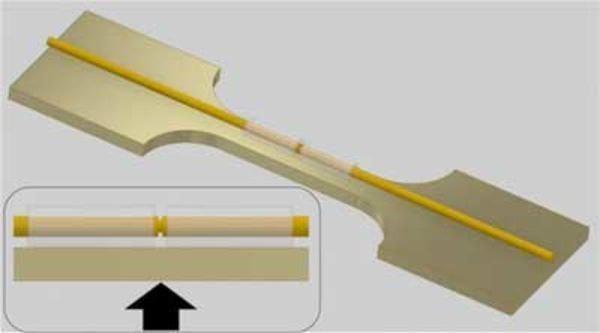
Measuring Electrical Conductance Across A Single Molecule
"Scientists at Aix-Marseille University developed a stable mechanical design to measure electrical current across a single molecule that assembles on a noble metal at room temperature. When noble metals, like gold, are treated with an aliphatic thiol, like alkanethiol, a uniform monolayer -- a layer only one molecule deep -- self-assembles on the surface. Each individual molecule can conduct electrons. This phenomenon is interesting because the conducting molecules produce unique quantum properties that could potentially be useful in electronics such as transistors, superconducting switches and gas sensors. Attempts to measure the current across this thin skim of molecules have yielded varied results. Researchers at Aix-Marseille University in France developed a new, stable mechanical setup to measure conductance across individual molecules with greater success." [...]
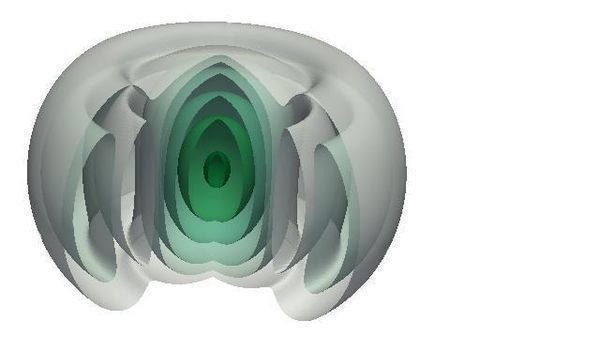
Supercomputer simulation opens prospects for obtaining ultra-dense electron-positron plasmas
"To achieve breakthrough research results in various fields of modern science, it is vital to develop successful interdisciplinary collaborations. Long-term interaction of physicists from the Institute of Applied Physics of the Russian Academy of Sciences, researchers from Chalmers University of Technology and computer scientists from Lobachevsky University has resulted in a new software tool PICADOR developed for numerical modeling of laser plasmas on modern supercomputers. The work on the PICADOR software system started in 2010. PICADOR is a parallel implementation of the particle-in-cell method that has been optimized for modern heterogeneous cluster systems. The project combined the competencies and efforts of experts from different fields, thus becoming the basis for the well-thought-out optimization and development of new computing approaches that take into account various physical processes. Eventually, this opened the way for a breakthrough in modeling capabilities in a number of research projects." [...]
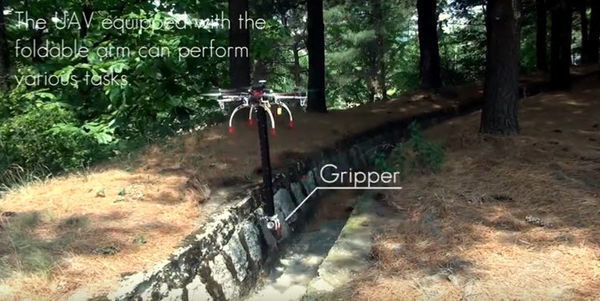
Origami-Inspired 'Inspector Gadget Robotic Arm', Published in 'Science Robotics'
"SNU Soft Robotics Research Center led by Professor CHO Kyu-Jin at the Department of Mechanical Science and Engineering has developed an origami-inspired robotic arm that is foldable, self-folding and also highly-rigid. (The researchers include Suk-Jun Kim, Dae-Young Lee, Gwang-Pil Jung, Professor of SeoulTech) The researchers developed a novel robotic arm using a concept of variable stiffness. The robotic arm made it possible to change the shape with a single wire, thus raising the possibility of practical use of the origami structure. The robotic arm is light-weighted, and can fold flat and extend like an automatic umbrella and even becomes instantly stiff. The key principle is a collapsible locker and this enables the robotic arm to overcome the drawbacks of origami-inspired structures that is hard to withstand external forces and is hard to be easily actuated. The variable stiffness mechanism is based on an origami principle of perpendicular folding; two perpendicular fold lines constrain each other's movement." [...]
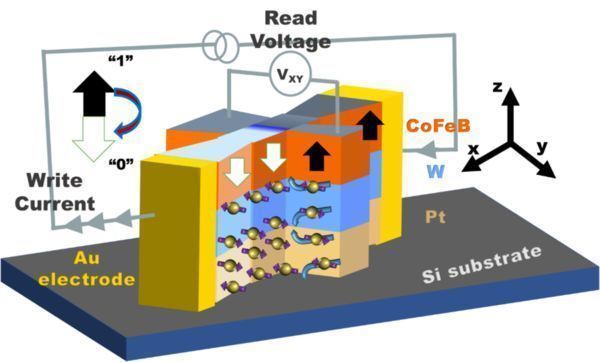
Zero Field Switching (ZFS) Effect in a Nanomagnetic Device
"Illustration of an unexpected phenomenon known as zero field switching (ZFS) that could lead to smaller, lower-power memory and computing devices than presently possible. The image shows a layering of platinum (Pt), tungsten (W), and a cobalt-iron-boron magnet (CoFeB) sandwiched at the ends by gold (Au) electrodes on a silicon (Si) surface. The gray arrows depict the overall direction of electric current injected into the structure at the back of the gold (Au) contact and coming out the front gold contact pad. The CoFeB layer is a nanometer-thick magnet that stores a bit of data. A “1” corresponds to the CoFeB magnetization pointing up (up arrow), and a “0” represents the magnetization pointing down (down arrow). The “0” or “1” can be read both electrically and optically, as the magnetization changes the reflectivity of light shining on the material through another phenomenon known as the magneto-optical Kerr effect (MOKE)." [...]
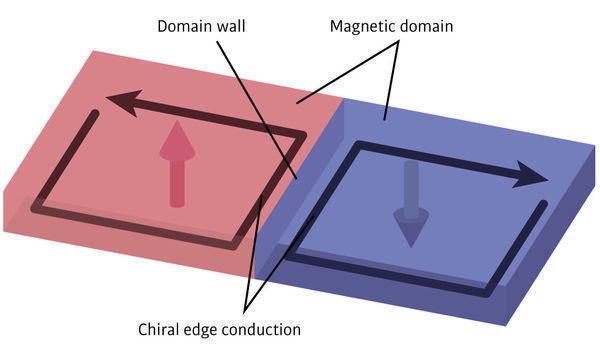
Domain walls allow dissipationless chiral edge conduction of electrons
"Chiral edge states could offer a way to store and manipulate information in low-power electronic devices By controlling magnetized patches within thin films of material, RIKEN researchers have created electronic channels that can carry a current without any loss of energy1. This principle could eventually lead to extremely low-power electronic devices for storing and processing information. The researchers’ work relies on a phenomenon called the quantum anomalous Hall effect (QAHE). This is related to the Hall effect, in which a magnetic field applied at right angles to an electrical current causes electrons in the current to drift to one side of the conductor, creating a voltage across the material. The QAHE typically occurs in thin films at very low temperatures. Magnetic atoms within the material, rather than an external magnetic field, cause the same sort of electron drift." [...]
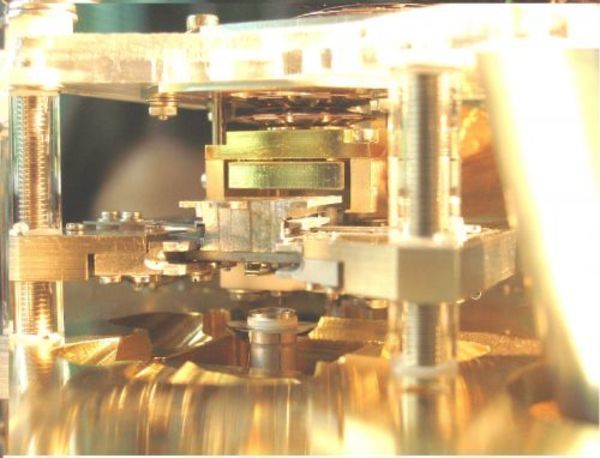
High quality graphene from nickel
"A study published in Science unveils the catalytic action of nickel in the growth of graphene sheets. The research, carried out by Iom-Cnr and the University of Trieste, provides new strategies to improve the industrial production of this material characterized by exceptional properties Graphene is a two-dimensional material, very thin, composed of a single layer of carbon atoms, but also flexible like plastic and with a mechanical resistance a hundred times higher than steel. This is why it is considered practically perfect for multiple uses in industrial and technological fields; however, it is difficult to produce, making its use extremely expensive. A study, conducted in Trieste (Italy) by the Istituto officina dei materiali of the Italian National Research Council (Iom-Cnr) and by the Department of physics of the University of Trieste, just published in the prestigious Science magazine, identifies the mechanism of graphene growth on the surface of a common metal, nickel, opening up new possibilities in production technologies. "We know that individual atoms are always present on metal surfaces, where they can freely move around and participate in many of the processes that take place there", explains Cristina Africh, of Iom-Cnr. "In our study we have shown that, on a nickel surface, the mobile metal atoms act as catalysts, facilitating the formation of graphene"." [...]
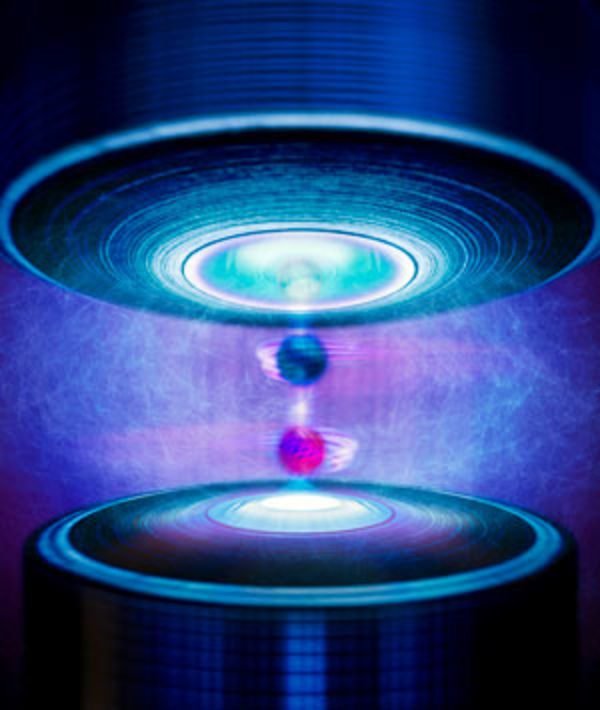
Dynamic solution for accurate reading
"A sensing scheme that responds dynamically to voltage fluctuations could improve accuracy when reading data from spin-based memory storage A voltage sensing scheme developed by researchers from Singapore could improve the accuracy of reading data from spin-based memory systems with only minimal modifications. The scheme responds dynamically to voltage changes in the system, so that it can better discern whether it is reading a binary on (1) or off (0) state. The cutting-edge data storage technology, called spin-transfer torque magnetic random-access memory (STT-MRAM), encodes data using the intrinsic angular momentum of electrons — their spin, instead of their charge. Quang-Kien Trinh, Sergio Ruocco from the A*STAR Data Storage Institute and Massimo Alioto from the National University of Singapore are at the forefront of global efforts to prove that STT-MRAM can provide a fast, high-density, low-power alternative to existing charge-based memories. “STT-MRAM is the leading candidate for future non-volatile, universal memory technology,” says Trinh. “It could serve in consumer devices, corporate data centers, and even high-end critical applications such as unmanned vehicles, aircraft, and military.” In STT-MRAM systems, data bits are stored as either 1s or 0s by flipping the orientation of magnetized ‘bitcells’." [...]
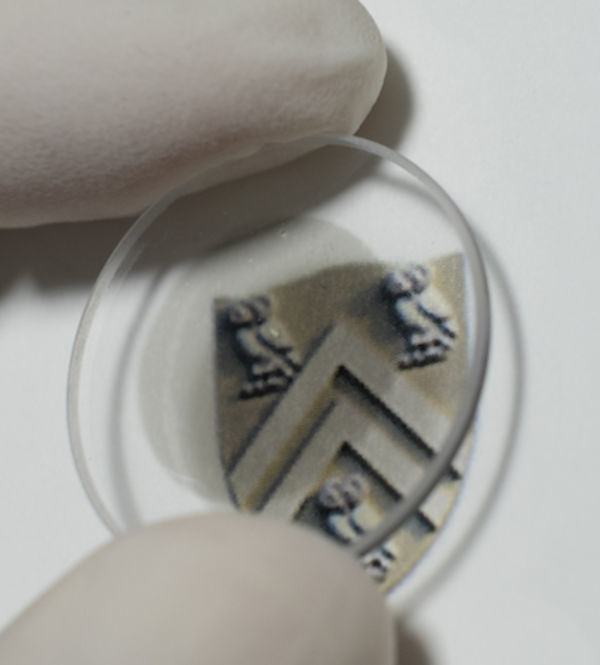
Plasmons triggered in nanotube quantum wells
"Rice, Tokyo Metropolitan scientists create platform for unique near-infrared devices A novel quantum effect observed in a carbon nanotube film could lead to the development of unique lasers and other optoelectronic devices, according to scientists at Rice University and Tokyo Metropolitan University. The Rice-Tokyo team reported an advance in the ability to manipulate light at the quantum scale by using single-walled carbon nanotubes as plasmonic quantum confinement fields. The phenomenon found in the Rice lab of physicist Junichiro Kono could be key to developing optoelectronic devices like nanoscale, near-infrared lasers that emit continuous beams at wavelengths too short to be produced by current technology. The new research is detailed in Nature Communications. The project came together in the wake of the Kono group’s discovery of a way to achieve very tight alignment of carbon nanotubes in wafer-sized films. These films allowed for experiments that were far too difficult to carry out on single or tangled aggregates of nanotubes and caught the attention of Tokyo Metropolitan physicist Kazuhiro Yanagi, who studies condensed matter physics in nano materials." [...]

Scientists detect radio echoes of a black hole feeding on a star
"Signals suggest black hole emits a jet of energy proportional to the stellar material it gobbles up. On Nov. 11, 2014, a global network of telescopes picked up signals from 300 million light years away that were created by a tidal disruption flare — an explosion of electromagnetic energy that occurs when a black hole rips apart a passing star. Since this discovery, astronomers have trained other telescopes on this very rare event to learn more about how black holes devour matter and regulate the growth of galaxies. Scientists from MIT and Johns Hopkins University have now detected radio signals from the event that match very closely with X-ray emissions produced from the same flare 13 days earlier. They believe these radio “echoes,” which are more than 90 percent similar to the event’s X-ray emissions, are more than a passing coincidence. Instead, they appear to be evidence of a giant jet of highly energetic particles streaming out from the black hole as stellar material is falling in." [...]
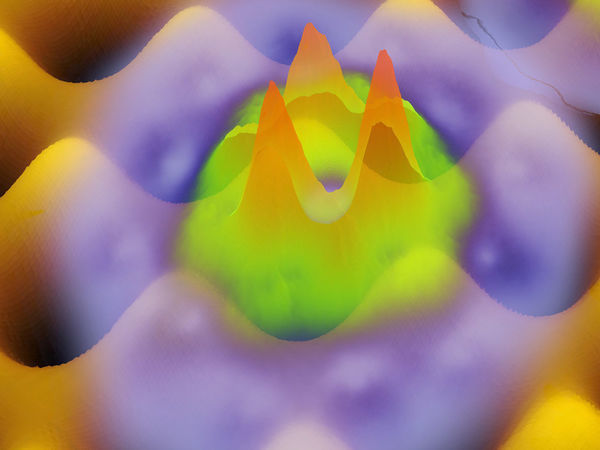
A new kind of quantum bits in two dimensions
"Combining two ultra-thin material layers yields new possibilities for quantum electronics. A research team with members from TU Wien presents strongly tunable quantum systems. Two novel materials, each composed of a single atomic layer and the tip of a scanning tunneling microscope – these are the ingredients to create a novel kind of a so-called “quantum dot”. These extremely small nanostructures allow delicate control of individual electrons by fine-tuning their energy levels directly. Such devices are key for modern quantum technologies. The theoretical simulations for the new technology were performed in the team of Prof. Florian Libisch and Prof. Joachim Burgdörfer at TU Wien." [...]
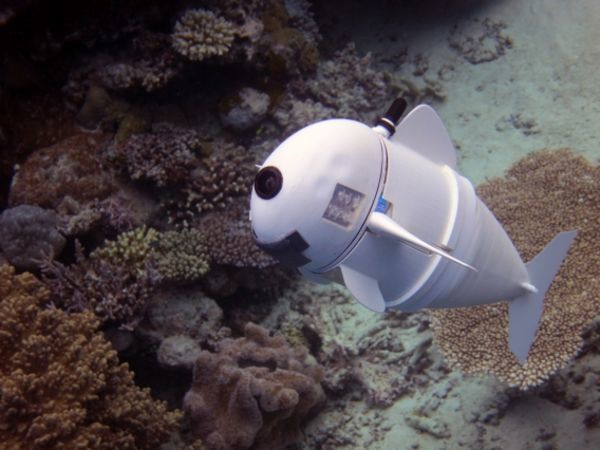
Soft robotic fish swims alongside real ones in coral reefs
"Made of silicone rubber, CSAIL’s “SoFi” could enable a closer study of aquatic life. This month scientists published rare footage of one of the Arctic’s most elusive sharks. The findings demonstrate that, even with many technological advances in recent years, it remains a challenging task to document marine life up close. But MIT computer scientists believe they have a possible solution: using robots. In a paper out today, a team from MIT’s Computer Science and Artificial Intelligence Laboratory (CSAIL) unveiled “SoFi,” a soft robotic fish that can independently swim alongside real fish in the ocean. During test dives in the Rainbow Reef in Fiji, SoFi swam at depths of more than 50 feet for up to 40 minutes at once, nimbly handling currents and taking high-resolution photos and videos using (what else?)" [...]

RIT researchers improve fabrication process of nano-structures for electronic devices
"Use of indium gallium phosphide with I-MacEtch processing shows promise for more cost effective fabrication and increased performance in devices from photonics to telecommunications Researchers at RIT have found a more efficient fabricating process to produce semiconductors used in today’s electronic devices. They also confirmed that materials other than silicon can be used successfully in the development process that could increase performance of electronic devices. This fabrication process—the I-MacEtch, or inverse metal-assisted chemical etching method—can help meet the growing demand for more powerful and reliable nano-technologies needed for solar cells, smartphones, telecommunications grids and new applications in photonics and quantum computing. “What is novel about our work is that for the first time we are looking at applying I-MacEtch processing to indium-gallium-phosphide materials. I-MacEtch is an alternative to two conventional approaches and is a technique that has been used in the field—but the materials that have been explored are fairly limited,” said Parsian Mohseni, assistant professor of microsystems engineering in RIT’s Kate Gleason College of Engineering. He is also director of the EINS Laboratory at the university." [...]
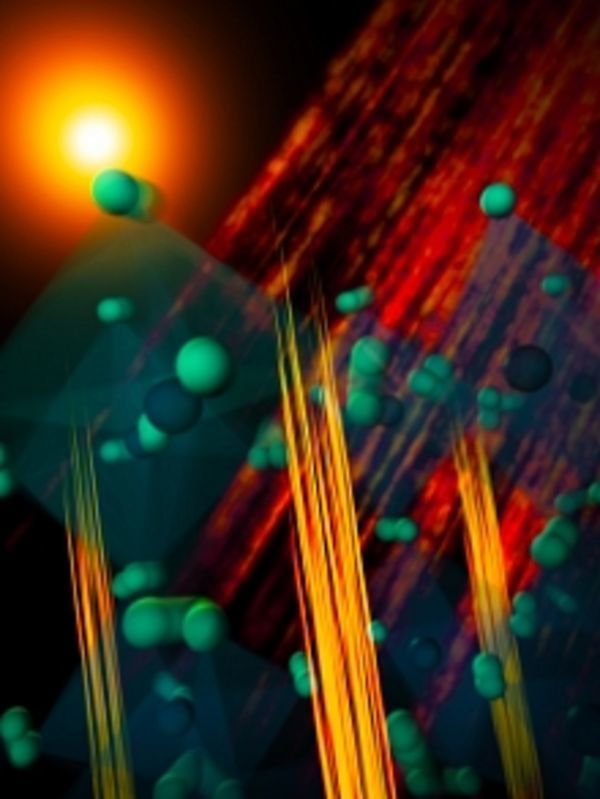
Study Reveals New Insights into How Hybrid Perovskite Solar Cells Work
"Research conducted at the atomic scale could help explain how electric currents move efficiently through hybrid perovskites, promising materials for solar cells. Scientists have gained new insights into a fundamental mystery about hybrid perovskites, low-cost materials that could enhance or even replace conventional solar cells made of silicon. Under a microscope, a slice of perovskite looks like an abstract mosaic of random grains of crystal. The mystery is how this patchwork of tiny, imperfect grains can transform sunlight into electricity as efficiently as a single crystal of pure silicon. A recent study by scientists at Stanford University and the Department of Energy’s SLAC National Accelerator Laboratory offers new clues. Writing in the March 15th issue of Advanced Materials, the scientists provide a new understanding of how electric charges separate in perovskites a few billionths of a second following the absorption of light, the crucial first step in generating an electric current." [...]
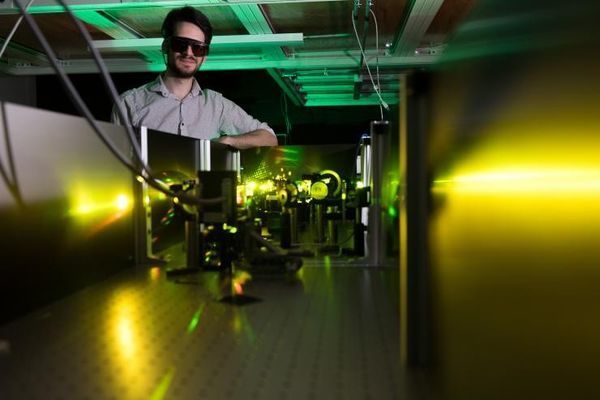
A Future Colorfully Lit by the Mystifying Physics of Paint-On Semiconductors
"Some novel materials that sound too good to be true turn out to be true and good. An emergent class of semiconductors, which could affordably light up our future with nuanced colors emanating from lasers, lamps, and even window glass, could be the latest example. These materials are very radiant, easy to process from solution, and energy-efficient. The nagging question of whether hybrid organic-inorganic perovskites (HOIPs) could really work just received a very affirmative answer in a new international study led by physical chemists at the Georgia Institute of Technology. The researchers observed in an HOIP a “richness” of semiconducting physics created by what could be described as electrons dancing on chemical underpinnings that wobble like a funhouse floor in an earthquake. That bucks conventional wisdom because established semiconductors rely upon rigidly stable chemical foundations, that is to say, quieter molecular frameworks, to produce the desired quantum properties." [...]

Digging Deep: Harnessing the Power of Soil Microbes for More Sustainable Farming
"Berkeley Lab’s ‘farm of the future’ project marries microbiology and machine learning This farm in Arkansas may soon be the most scientifically advanced farm in the world. (Credit: Jay McEntire) There’s a farm in Arkansas growing soybeans, corn, and rice that is aiming to be the most scientifically advanced farm in the world. Soil samples are run through powerful machines to have their microbes genetically sequenced, drones are flying overhead taking hyperspectral images of the crops, and soon supercomputers will be crunching the massive volumes of data collected. Scientists at the Department of Energy’s Lawrence Berkeley National Laboratory (Berkeley Lab), working with the University of Arkansas and Glennoe Farms, hope this project, which brings together molecular biology, biogeochemistry, environmental sensing technologies, and machine learning, will revolutionize agriculture and create sustainable farming practices that benefit both the environment and farms. If successful, they envision being able to reduce the need for chemical fertilizers and enhance soil carbon uptake, thus improving the long-term viability of the land, while at the same time increasing crop yields. A central piece of the research is understanding the role of microbes in the health of the soil." [...]
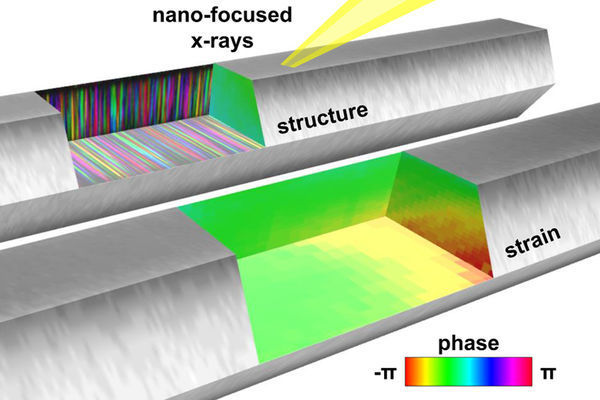
Scientists have a new way to gauge the growth of nanowires
"In a new study, researchers from the U.S. Department of Energy’s (DOE) Argonne and Brookhaven National Laboratories observed the formation of two kinds of defects in individual nanowires, which are smaller in diameter than a human hair. These nanowires, made of indium gallium arsenide, could be useful for a wide range of applications in a field scientists have termed optoelectronics, which encompasses devices that work by converting light energy into electrical impulses. Fiber optic relays are a good example. “We just have to get close enough to hit somewhere on the target; we don’t have to split the proverbial arrow.” — Stephan Hruskewycz, Argonne materials scientist The effectiveness of these devices, however, can be affected by tiny defects in their components. These defects, which can change both the optical and electronic properties of these materials, interest scientists who seek to tailor them to boost the functionality of future optoelectronics, including materials that will be able to manipulate quantum information. In the study, the team, which also involved collaborators from Northwestern University and two European universities, observed two kinds of defects in a single nanowire." [...]
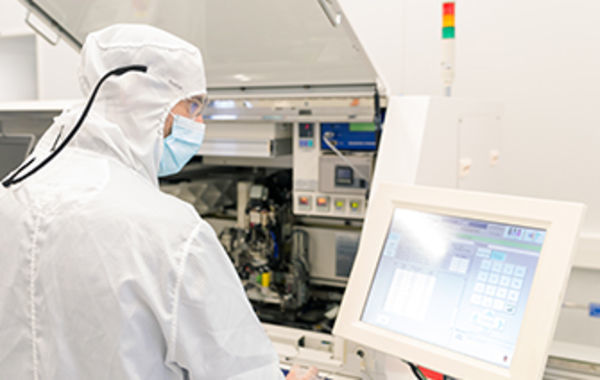
CEA Shows Path to Creating Building Blocks of Quantum Processors With 28si Isotope In a CMOS Fab Line
"Fabrication of Isotopically Enriched, Industry-Compatible Wafers Points Way To Realizing Silicon Spin Quantum Bits with Enhanced Fidelity CEA-Leti, a French technology research institute of the CEA and Inac, a joint fundamental research institute between the CEA and the University Grenoble Alpes, today announced a breakthrough towards large-scale fabrication of quantum bits, or qubits, the elementary bricks of future quantum processors. They demonstrated on a 300 mm pre-industrial platform a new level of isotopic purification in a film deposited by chemical vapor deposition (CVD). This enables creating qubits in thin layers of silicon using a very high purity silicon isotope, 28Si, which produces a crystalline quality comparable to thin films usually made of natural silicon. “Using the isotope 28Si instead of natural silicon is crucial for the optimization of the fidelity of the silicon spin qubit,” said Marc Sanquer, a research director at Inac. “The fidelity of the spin qubit is limited to small values by the presence of nuclear spins in natural silicon. But spin qubit fidelity is greatly enhanced by using 28Si, which has zero nuclear spin." [...]
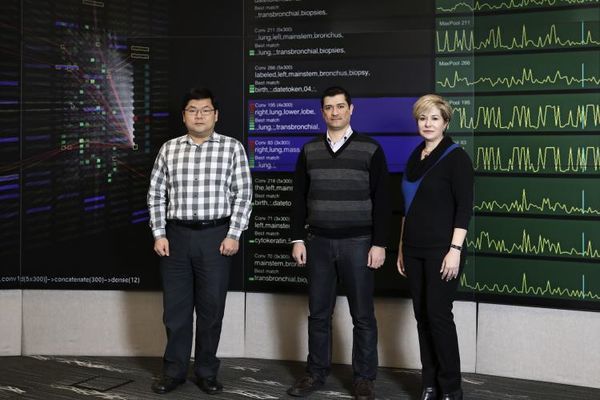
ORNL researchers design novel method for energy-efficient deep neural networks
"An Oak Ridge National Laboratory method to improve the energy efficiency of scientific artificial intelligence is showing early promise in efforts to parse insights from volumes of cancer data. Researchers are realizing the potential of deep learning to rapidly advance science, but “training” the underlying neural networks with large volumes of data to tackle the task at hand can require large amounts of energy. These networks also require complex connectivity and enormous amounts of storage, both of which further reduce their energy efficiency and potential in real-world applications. To address this issue, ORNL’s Mohammed Alawad, Hong-Jun Yoon, and Georgia Tourassi developed a novel method for the development of energy-efficient deep neural networks capable of solving complex science problems. They presented their research at the 2017 IEEE Conference on Big Data in Boston. The researchers demonstrated that by converting deep learning neural networks (DNNs) to “deep spiking” neural networks (DSNNs), they can improve the energy efficiency of network design and realization." [...]
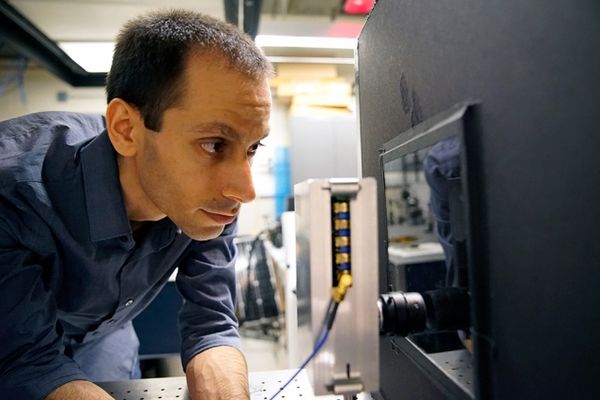
Depth-sensing imaging system can peer through fog
"Computational photography could solve a problem that bedevils self-driving cars. MIT researchers have developed a system that can produce images of objects shrouded by fog so thick that human vision can’t penetrate it. It can also gauge the objects’ distance. An inability to handle misty driving conditions has been one of the chief obstacles to the development of autonomous vehicular navigation systems that use visible light, which are preferable to radar-based systems for their high resolution and ability to read road signs and track lane markers. So, the MIT system could be a crucial step toward self-driving cars. The researchers tested the system using a small tank of water with the vibrating motor from a humidifier immersed in it." [...]

New algorithm will allow for simulating neural connections of entire brain on future exascale supercomputers
"An international team of scientists has developed an algorithm that represents a major step toward simulating neural connections in the entire human brain. The new algorithm, described in an open-access paper published in Frontiers in Neuroinformatics, is intended to allow simulation of the human brain’s 100 billion interconnected neurons on supercomputers. The work involves researchers at the Jülich Research Centre, Norwegian University of Life Sciences, Aachen University, RIKEN, KTH Royal Institute of Technology, and KTH Royal Institute of Technology. An open-source neural simulation tool. The algorithm was developed using NEST* (“neural simulation tool”) — open-source simulation software in widespread use by the neuroscientific community and a core simulator of the European Human Brain Project. With NEST, the behavior of each neuron in the network is represented by a small number of mathematical equations, the researchers explain in an announcement." [...]
Documentação
A documentação é parte essencial do processo de aprendizagem e a Internet além de artigos interessantes de explorar também tem alguma documentação em formato PDF interessante de ler. Todos os links aqui apresentados são para conteúdo disponibilizado livremente pelo editor do livro.
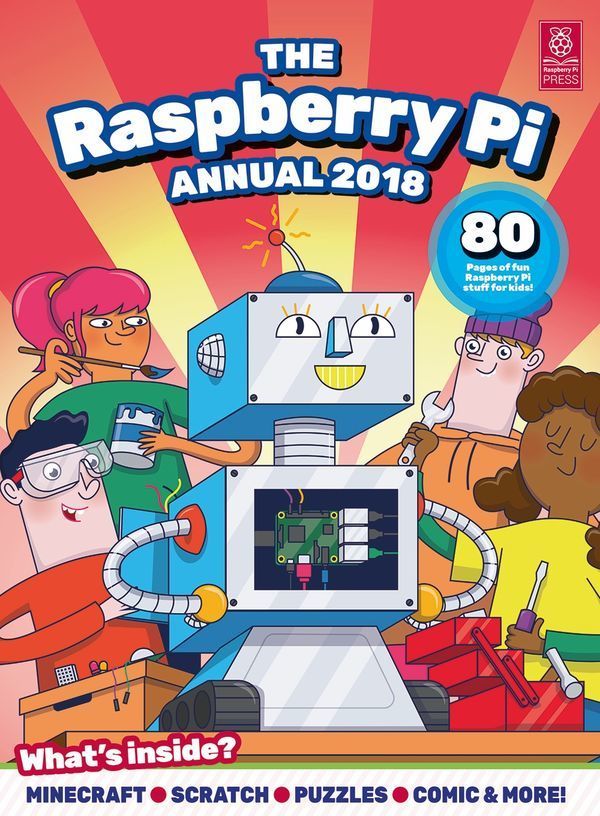
Raspberry PI Annual 2018
"The Raspberry Pi Annual 2018 is an educational book packed with cartons, quizzes, and computer code. It’s entertaining for kids of all ages, and the perfect introduction to The Raspberry Pi – the British-built, credit card-sized computer. - Get started. Set up your Raspberry Pi & use it for the first time - Solve puzzles. Spot the difference, word searches, mazes & more! - Make projects." [...]

HackSpace magazine #5
"In HackSpace magazine issue 5 Limor Fried of Adafruit teaches us what it takes to make great hardware. We also find out everything there is to know about LEDs, convert a Dremel into a table saw and much more: - Ruth Amos chats about Kids Invent Stuff and Girls With Drills - Join Cheerlights, the world's biggest IoT project - Find the best gesture sensor for your projects - Discover the brand new Raspberry Pi 3B+ - Lots and lots of LEDs" [...]
Projetos Maker
Diversos Projetos interessantes.
MIDI Controlled Led Structure
"As a true music lover and an electronic and computer science student, I've always wanted to build MIDI devices, that I could use for electronic music creation. After attending to a lot of shows and music festivals, I started to get really interested in light shows during performances. After a lot of research, I've mostly only found devices that use microphone and could not allow to control LEDs exactly as you want. By getting more and more familiar with DAW and MIDI signals, I decided to get start with this project! It consists in a 3D structure with incoroporated LEDs, that are actually controlled by MIDI signals (NoteOn, NoteOff and CC Messages). So that, the musician could control the color and the intensity of each LED, only by using MIDI signals, generated by any DAW." [...]

Digitize A Song With Arduino
"I wanted to make a project that combined two of my favorite subjects: science and music. I thought of all of the ways that I could combine the two domains, and, I thought that it would be interesting to make an Arduino play Fur Elise while displaying the pitch of the note in Hertz. Now that I have given you an introduction, let's start building the machine! You will need one Arduino Uno or Mega, a lot of jumper cables, a Piezo buzzer, a breadboard, a 16*2 LCD screen with all wiper pins in place, and a 10k Potentiometer (you may also hear them being referred to as potmeters). It is best to get all of these supplies together before we start the build. " [...]

Dimmable LED Using BASYS 3 Board
"In this guide we are going to build and control an external LED dimming system. With the available buttons, the user can dim the LED bulb to any desired brightness. The system uses the Basys 3 board, and it is connected to a breadboard that contains a resistor and the LED bulb. Pressing the designated "up" button will increase the brightness, and pressing the "down" button will decrease the brightness all the way to zero. Not only does this prevent the user from being blinded by bright-as-the-sun light bulbs but it also conserves energy! " [...]
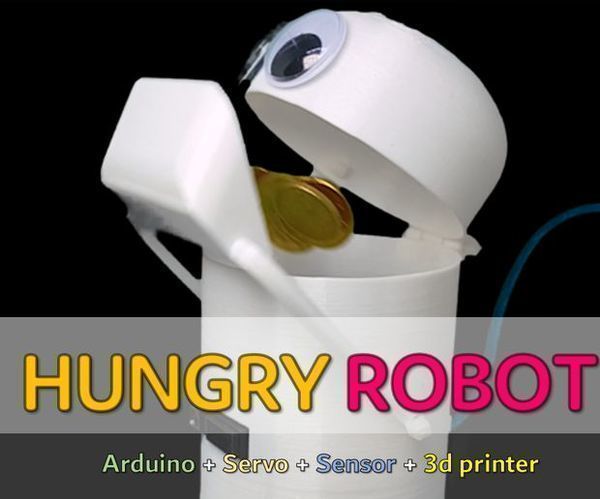
How To Make Hungry Robot - Eat Everything! (3D Printer, Arduino, Sensor, Servo)
"I really love to make use-for-nothing robots such as Drinky (Drinking buddy robot). I want to make a robot for emotional purpose not for functional. This is fun, makes smile and feels good. This robot is also one of useless robot but, I'd like to make a funny robot! There are many coin-eating robots (Robie). I'm going to make it by using 3d printer and an Arduino." [...]

How To Make A Go Kart / Electric Car Using PVC Pipe At Home
"Build your own Go-Kart at home. Now just because you don't need a full welder, you will still need some power tools to cut wood. Go-Karts: They're the most fun a kid can have on four wheels. I have got the plans and list of parts you need to build one for your family and have the kids cruising around before sundown. " [...]
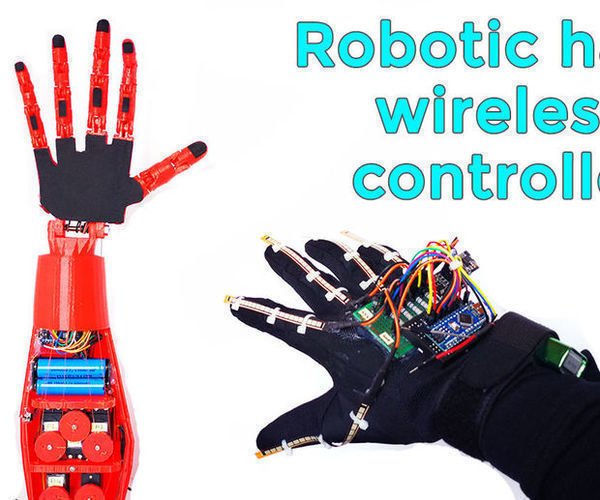
Robotic Hand With Wireless Glove Controlled | Nrf24L01+ | Arduino
"In this video; 3D robot hand assembly, servo control, flex sensor control, wireless control with nRF24L01, Arduino receiver and transmitter source code are available. In short, in this project we will learn how to control a robot hand with a wireless glove. " [...]
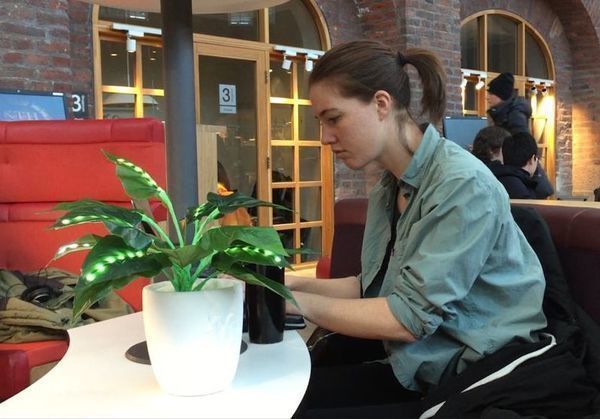
Alone Together - Plant Lamps
"This instructable is part of the course Physical Interaction and Realization at KTH, Royal Institute of Technology. We are going to teach you how to build two, quite organic and interactive plant-lamps, Thorulf and Svamp. Thorulf is a plant with flex sensors and LEDs while Svamp is a collection of mushrooms with circular force sensors. They are connected via Bluetooth and communicate with each other, sort of like "friendship lamps". " [...]

Line Follower Robot - Arduino Mega/Uno - Very Fast Using Port Manipulation
"Line follower robot is a useful robot that is used in ware houses, industries, and stores etc, where it follows a dedicated path. The presented robot captures line position with IR Sensors. If the robot get off the line it will U turn and back to the line again. Also, it would stop while the designed spot is appeared.I used Direct port manipulation method (setting output pins directly) instead of using the Arduino default digitalWrite() functions. Using the port manipulation method in programming results in more space in HEX file and more speed in executingthe code. " [...]
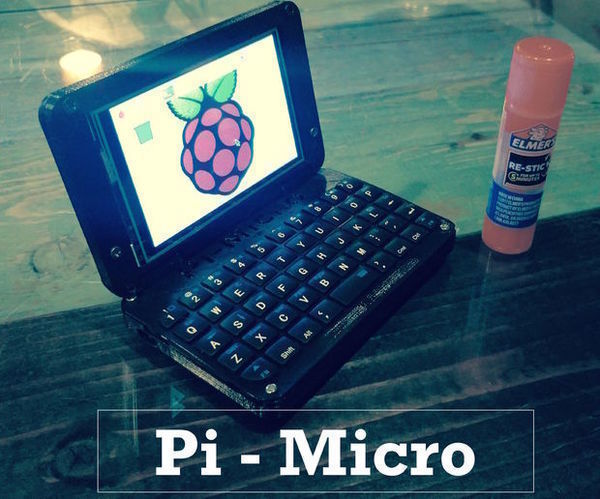
Pocket-Sized Linux Computer: Pi-Micro
"Have you ever wanted to make a computer that could fit in your hand? One that was a full-fledged laptop, but tiny? Me too, so I built this little laptop, which I call the Pi-Micro. This is the third version of the Pi-Micro, almost a year in the making, and I felt that it was polished enough to share. The Pi-Micro runs a full linux operating system, and has the ability to browse the web, create and edit documents, use the terminal, create custom programming scripts, and play games. As far as I know, it is the smallest computer built using a Raspberry Pi that also has a full keyboard." [...]

Tiny LED Matrix Display Clock
"I have always wanted to have old-fashioned desktop clock, that looks like something from the movies of the 90's, with pretty humble functionality: real-time clock, date, changing background light, beeper and an alarm option. So, I've come with an idea, to build one: A digital device, based on microcontroller with all the features I've mentioned above, and powered by USB - either PC or any mobile USB charger. Since I wanted to make it programmable, with menus and settings adjustment, MCU placement was inevitable in this project. ATMEGA328P IC (That every Arduino Uno board consists of) was chosen to be the "brain" of the circuit (Speaking of which, I just had plenty of them). Combining some electronic parts as RGB LED, trickle charge timekeeping chip and push-buttons, enabled the birth of the entire project - Programmable small-sized LED display desktop clock. So, after we've covered the entity of the project, let's build it!" [...]

Sonar Glove For The Visually Impaired
"With minimal practise, this device is capable of greatly aiding someone visually impaired have a sense of their surroundings. The glove has a longer range than a cane and is able to detect obstacles like cars, people, walls, and trees. It will greatly aid in mobility and positional awareness. The Sonar Glove is a compact, hand held sonar device similar to that on a large watercraft. Using the on-board ultrasonic sensor, it detects the nearest object from the user and alters the frequency of a beeping noise accordingly so the user may gauge the distance of obstacles around them. Our hearts and talents go out to the disabled as we keep improving technology to make their life easier." [...]

Sound Responding Arduino Robot
"hello guys ..this is our new project..thats called sound responding arduino robot..this robot is moves or changes direction by catching sound by sound sensor module.... so we are using sound sensor module for this project... what is sound sensor? :- The Sound Detector/sensor is a small board that combines a microphone and some processing circuitry. It provides not only an audio output, but also a binary indication of the presence of sound, and an analog representation of it's amplitude. Sound sensors can be used for a variety of things, one of them could be turning lights off and on by clapping. Today we are going to use the sound sensor to a robo which will respond and moves with music, clapping or knocking...." [...]

Fuel Efficiency Detector
"Cars are the main mode of transportation in the world today. Specifically, in California, we are surrounded by streets, highways, and toll roads that thousands of cars drive on daily. However, cars use gas and california uses the most gasoline than any other state in the U.S., approximately 4,500 gallons per day. For our CPE 133 Final project, we decided to create system in which it could track the speed of a car and tell whether it exceeds the most efficient speed for the best gas mileage or fuel economy. This project would help drivers become aware of their fuel economy which in turn would hopefully help them save money, use less gas, and create less pollution in the air. " [...]

Secret Maze PCB
"Since publishing my Secret Maze project I've designed a printed circuit board for the circuit, to make it easier to build a convenient pocket version of the game: To avoid the need for an on/off switch I've updated the program to automatically go to sleep if there has been no keypress for 30 seconds; this has the advantage that it's not possible to inadvertently leave the game on, and run down the battery. To wake up the game you press the button labelled On on the PCB. The power consumption in sleep mode is about 0.25µA at 3V, which is negligible. There's a link to the Eagle files at the end of the article if you want to make yourself a board. The printed circuit board is designed for through-hole components, so it should be suitable for people without much soldering experience. I made it as compact as possible, with the pushbuttons arranged in a diamond shape; this doesn't affect the maze as long as you make sure you hold the board in a consistent orientation." [...]
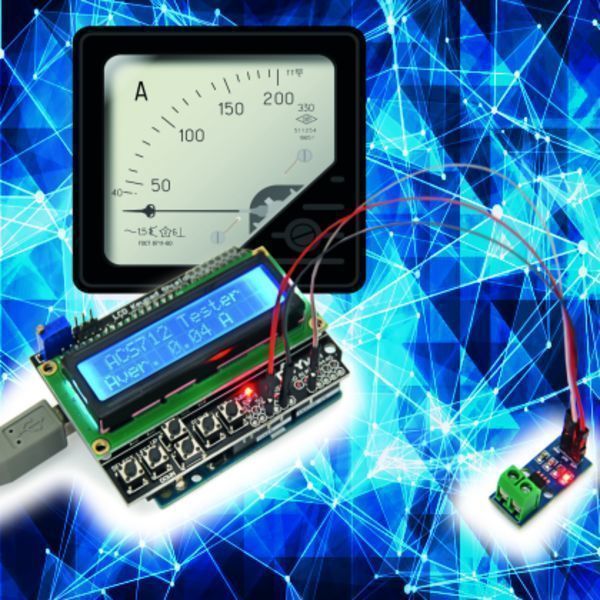
An Open Source Solid State Current measurement device
"There are many practical situations where we need to know the current absorption of a circuit branch, a motor or in general, an electric utilizer. Sure, we could just use a multimeter set on amps measurement, but this is not to point, in fact in this context, when we say know we mean to detect a value and transmit it to a circuit that will in turn carry out specific actions. In this case, we need an amperometric sensor capable of providing an appropriate output. We know that this can be implemented in various ways, according to the coupling with the circuit where we have to take the measurement, which can basically be magnetic (like an amperometric clamp) or galvanic. In this post, we propose a device of this kind, based on a dedicated chip mounted on a breakout board that is very practical to combine to various circuits, such as one of the many Arduino boards or our Fishino boards. The amperometric sensor described can measure up to 5 A both in direct or alternate current and provides, on the output, and analog voltage that is directly proportional to the detected value, according to a linear relation, although including a fixed offset." [...]

Tinydice: Professional Pcbs At Home
"What is the Tiny Dice? Simply put, TinyDice is just an electronic, Arduino compatible LED die that looks quite neat.In reality, this project was my attempt at doing things right; making an SMD circuit, a professional quality PCB, a good PCB design, and an effective code, that allows for a very energy efficient project (when not in use, the whole thing consumes less than 0.1 micro amps, yes, less than 1 ten-millionth of an amp!). What will you learn here? You will learn how to make high quality, SMD PCBs, from design to use, which consists in; Designing the board, transferring the design into copper clad, etching the copper clad, adding a soldermask, making a solder paste stencil, home reflow soldering, and programming a standalone board. Additionally, you will learn to use and program MSP430 value line microcontrollers from Texas instruments, these can be programmed like an Arduino, but they are very cheap and come in many shapes and sizes, an ideal tool for the average hacker to be able to use. What will you obtain?" [...]

IR Remote Control Home Appliances
"This project describes a technique of adding the remote control feature to an electrical appliance. The goal is to construct a black box where you can plug in your V Ac appliances and control the ON and OFF operations with a TV or DVD remote that uses modulated infra-red (IR) pulse train of 38KHz frequency. The good thing about this project is that it does not use any microcontroller and is only based on the CD4017 decade counter IC. " [...]

Eve, The Arduino Chatter Bot
"Hello DIYrs, ever wanted to share your feelings with someone but there isn't a trusted one around? Well, my cute little Eve has been created for exactly that purpose. She is a chatterbot, a very cute one in fact. You can share your experiences, feelings and most importantly, argue about different things; she is well-experienced at it Because that's the most important function of a chatbot, make the person feel happy. Based upon simple, cheap components and basic programming, she can behave smart really to a great extent. Further the LCD eyes that she possess show how she feels when you say something." [...]
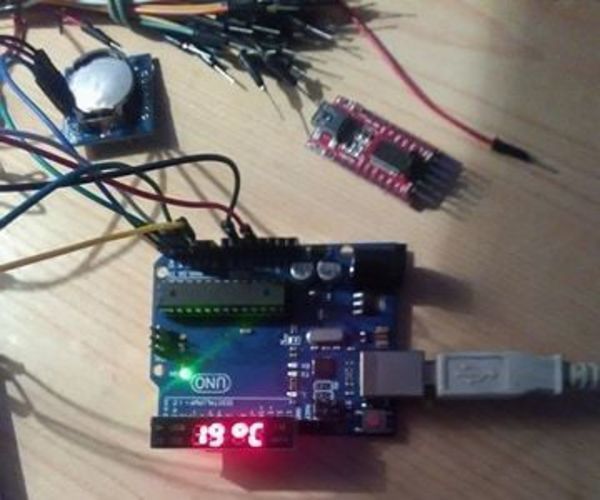
Central Thermal Reglable Thermostat And Clock With Arduino
"In image The thermostat is designed to control a recirculation pump of Central heating . If you have a house located on the outskirts of the city, the choice of the boiler should not be an impediment for you. Although, the thought that scares it is not positioned close to the gas network, know that these fears are dispelled by the practical and reasonable solutions. The most efficient and most convenient solution is Thermo wood. How does a wood? A wood burning Thermo-stove fits perfectly to the needs of your home, especially if your House is not in the vicinity of a gas pipe prior to find out what are the advantages of a wood, below you will find out how it works." [...]

Minimalist Iot Clock (Using ESP8266, Adafruit.Io, IFTTT, And Arduino Ide)
"In this tutorial I'll show how you can make a minimalist clock synchronized with the internet. I tested this with two different ESP8266 based boards: Firebeetle and NodeMCU. The microcontroller gets current time from a Google server, and displays it on a NeoPixel LED ring. It also receives current weather data from WeatherUnderground, using IFTTT and Adafruit.io platforms, and change LEDs colors based on the weather condition. It won't have a good resolution (due to the small number of LEDs), but it's a good way to practice your coding and electronic skills using a small number of components. I'll also be able to create a device that 'knows' current time, without the use of an external real time clock circuit, and that's able to 'sense' changes on the weather." [...]

Eyepot: a creepy teapot
"What has four legs but only one eye? A teapot of course! My new robot is based on a Raspberry Pi Zero W with a camera. It is connected via a serial link to an Arduino Pro Mini board, which drives servos. Since each one of the four legs will have two articulations, each with one servo, we need eight servos in total. Here is a list of the material we will use: - a Raspberry Pi Zero W - a Raspberry Pi camera module V2 - a camera adapter for the Raspberry Pi Zero - an Arduino Pro Mini 3.3V/8MHz - 8 micro servos 9g rated ~5V (Tower Pro SG90 or similar) - a 5V switching regulator rated at least 3A - a 2S LiPo battery, 1000mAh is good - a MicroSD card for the Raspberry Pi, 16GB is good - a USB to UART bridge to program the Arduino board - Dupont wires, screws, pins, prototype board, soldering material, and glue Let's start by designing and printing the parts." [...]

Air Impaired
"Studies have shown that CO2 can impair your cognitive abilities. Create awareness of indoor CO2 levels with this fun project. Intro This project shows how to build a CO² for use in your home or office. With this device you can know at a glance if the air you are breathing is high in carbon dioxide. Using a simple color coded LED bar graph it displays the current CO² level. Each band is roughly 100 ppm of CO² increase." [...]

Hairio: Hair As Interactive Material
"HairIO: Human Hair as an Interactive MaterialHair is a unique and little-explored material for new wearable technologies. Its long history of cultural and individual expression make it a fruitful site for novel interactions. In this Instructable, we will show you how to make interactive hair extensions that change shape and color, sense touch, and communicate via bluetooth. We'll use a custom circuit, an Arduino Nano, an Adafruit Bluetooth board, shape memory alloy, and thermochromic pigments. This Instructable was created by Sarah Sterman, Molly Nicholas, and Christine Dierk, documenting work done in the Hybrid Ecologies Lab at UC Berkeley with Eric Paulos. An analysis of this technology and full study can be found in our paper, presented at TEI 2018." [...]
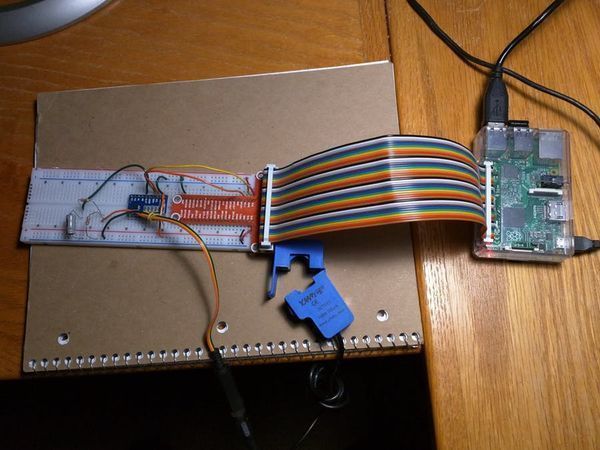
HomeEnergy - Pi
"Turn a Raspberry Pi into a home energy monitor with inexpensive components. Background This project got it's start because my local electric utility has started offering time of day rates. If you sign up, you get cheaper rates overnight and pay more during peak hours. The problem is I have no idea how much power I use by the time of day. There are expensive commercial solutions out there but I thought, maybe I can build my own using a Raspberry Pi I had laying around. There are several similar projects on Hackster.io." [...]
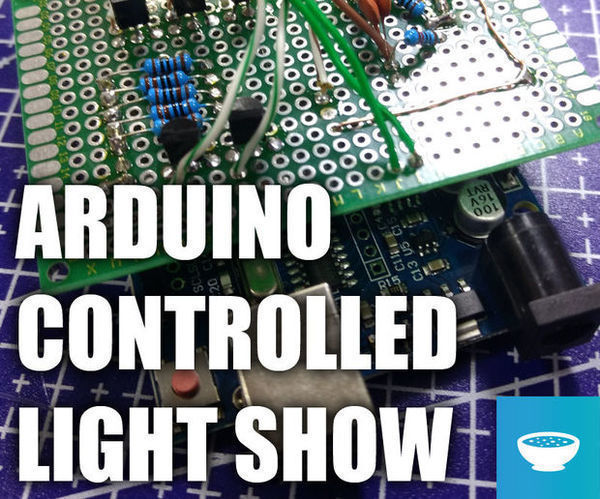
Arduino Based Light Show
"I've build an Arduino controlled light show as my entry for the into the Makers Rock, Album Art Collab. You can learn more for it on the following link: Makers Rock. The cover I choose is from Judas Priest - Painkiller album. The entire piece is a light show that is enclosed in a wooden frame and the album artwork is put on top so the light shines through. " [...]
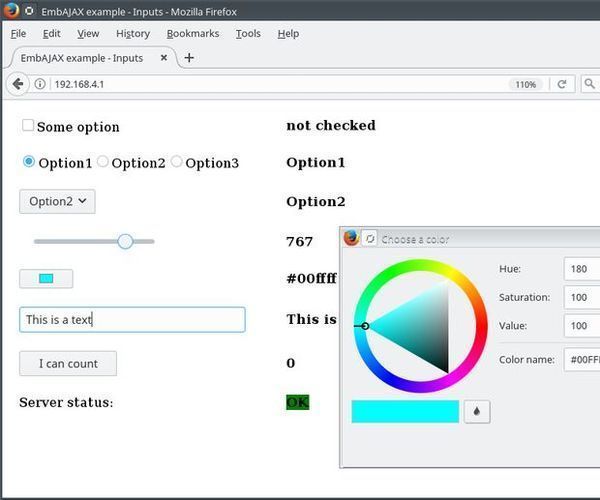
Easy ESP8266 (Arduino Core) Web Controls With Embajax
"If you came here, you have probably started playing with an ESP8266 as a web server, before. But if you have not: It's incredibly easy to implement a webserver on an ESP8266, and you should try this, today! (The hardest part is getting familiar with how to connect and program your ESP8266 - I will give you some links on this in Step 1). However, once that is accomplished, you don't want to simply serve static content, you want to display changing information such as temperatures or other sensor readings, and you want to add controls to allow turning on and off lights, etc. The general approach to doing so is using a family of techniques known as "AJAX" or Asynchronous Javascript and XML (where XML is typically replaced with JSON in contemporary applications). That is a relatively straight-forward technique to manage data exchange between a web server (your ESP8266), and a web client (browser on your smartphone or PC)." [...]

Light Theremin In A NES Controller
"I've been playing around with the 555 IC and never have I managed to get it to do anything until now. When I heard it come to life and start oscillating at me I was pretty damn happy with myself. If I can get it to make a sound, then anyone should be able to! I won't go into any details about the 555 IC - but if you want to know more you can check it out for yourself here. Basically this project uses a photo cell, also known as a CDS photoresister to change the pitch of the oscillating 555 IC. You use an LED to control the pitch, putting it closer to the photo cell shortens the pitch and moving it away lengthens the pitch." [...]

Hacking Qualcomm (Quick Charge) QC 2.0/3.0 with ATtiny85
"Get not only 5 volts but also 9, 12 volts (18 Watts max) out of any QC-compatible charger/power bank for supplying power hungry projects. Introduction Many USB powered consumer electronic devices have built in Qualcomm QC (Quick Charge) solution for rapid charging at different voltages rather than the usual 5.0 volts. This enables the opportunity to use QC compatible Power Banks for projects require more power or higher voltages like 9/12 volts. The purpose of this project is to develop a device that can hack the QC protocol and allow hobbyists, developer, engineers to use their power banks for more voltage/power for their next power hungry project. Developing the Hack * Device The whole device has two active components - the LM1117 3.3V voltage regulator and the ATtiny85 MCU to control. All other parts are resistors, push switch, connectors, jumpers, headers, terminal, protoboard etc." [...]
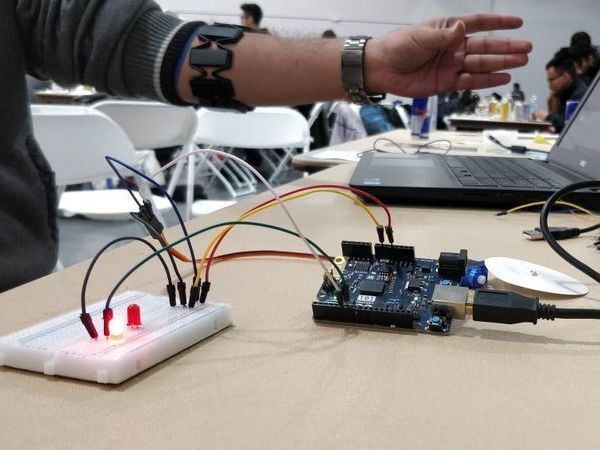
Gest-chair
"Gest-chair is a smart gesture controlled device developed to help wheelchair-bound people by automating the wheelchair. Gest-chair is a smart gesture controlled device developed to help physically challenged people - wheelchair bound. Using a myo armband the arduino takes an input from the user to drive the motors. It also has an emergency feature "SoS." Myo band informs the application about the orientation of the hand. It maps data into two type of spatial data i.e." [...]

Variable Voltage And Current Power Supply
"Homemade power supply, ideal for testing leds, motors and other electronics. List: -Dual Meter -DC module -10 k precision potentiometer or - Normal 10k Potentiometer" [...]

IoTrix (Smart Advertisement LED BOARD)
"IoTrix (Io - Intelligent ,Trix -LED matrix) .The project aims to make a Pharmacy sign board with P10 Led matrix in it , controlled by APP. IoTrix This App will let you customized messages displayed on the led matrix and Control the Led Strips. The Project aims to improve the user experience for sending multiple messages on the next generation iot enabled led board with android app. A person can choose from 8 different widgets in the App and add this messages in the buffer. I have to add a limit of 6 messages total in the buffer , as the json data size was becoming large for a simple arduino to process. The project if done with rpi can significantly improve the performance." [...]
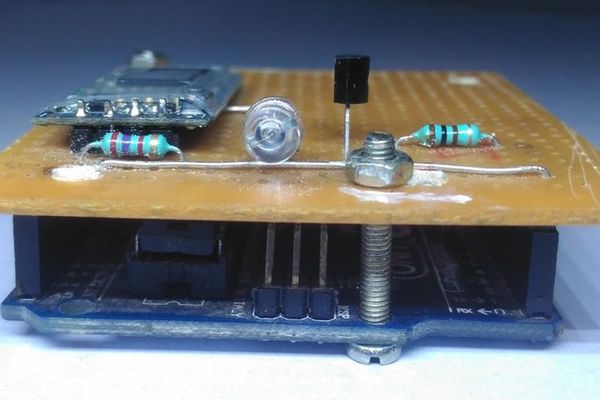
Diy Android Bluetooth Remote
"In this Instructable, one can know how to control TV using an Android device through Bluetooth. Using remotes to control TV is outdated. They are very fragile and go missing every time. So, I thought of building my own Mobile Bluetooth remote with Custom App which I designed from MIT App Inventor. LINK : http://appinventor.mit.edu/explore/ It is FUN to build and when it works it will be Awesome. " [...]
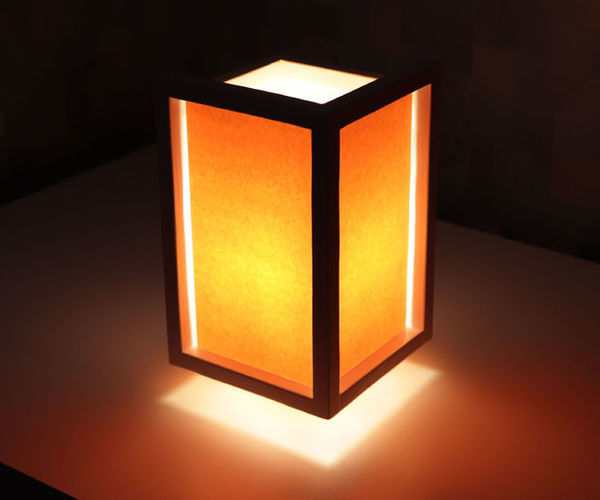
DIY Floating Night Lamp
"In my first DIY build video, I am going to show how you can build simple design floating night lamp, which is easy to build and doesnt require any advanced tools. " [...]
That's all Folks!


